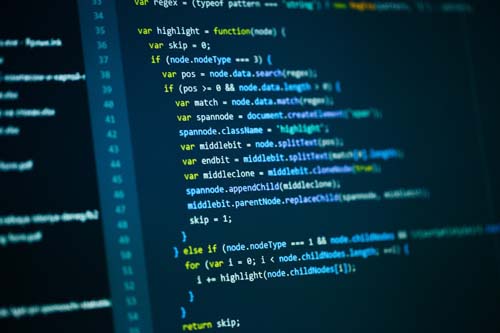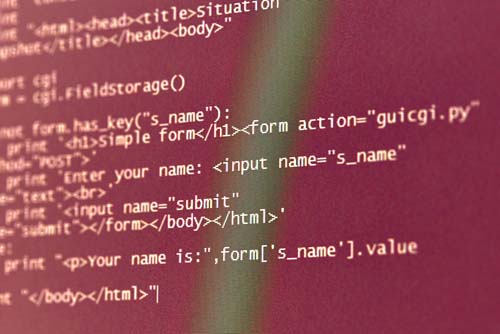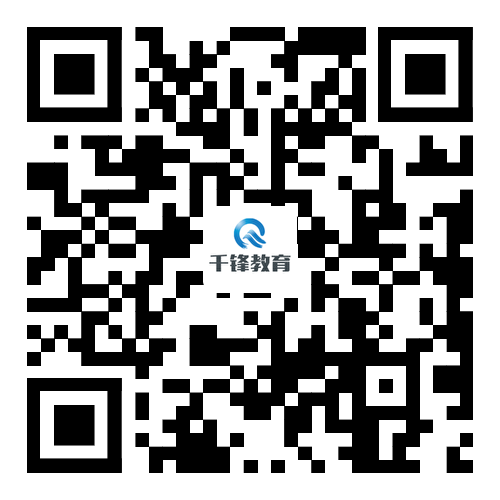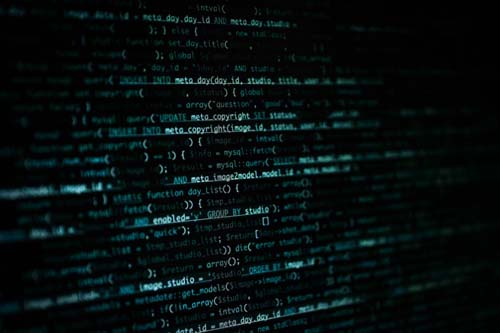golang区块链开发实现分布式账本和加密货币的应用程序
区块链技术是近年来备受关注的技术之一,而 Golang 作为一种高效的编程语言,也在区块链的应用中扮演着重要的角色。本文将介绍如何使用 Golang 实现区块链的应用程序,包括分布式账本和加密货币。

一、什么是区块链
区块链是一种去中心化的分布式数据库,它将数据记录在多个节点中,这些节点通过共识算法来维护数据的一致性。在区块链中,每个数据块都包含前一个数据块的哈希值,这个哈希值链接了所有的数据块,形成了一个不可篡改的链式结构,因此得名“区块链”。
二、Golang 和区块链
Golang 作为一种高效的编程语言,具有以下优势:
1. 高并发性:Golang 支持协程和通道,可以实现高并发的应用程序。
2. 高效性:Golang 的 GC 机制和其他优化技术可以提高程序的性能。
3. 简洁易懂:Golang 的语法简单易懂,容易编写和维护。
在区块链的应用中,Golang 也具有以下优势:
1. 语言本身就支持并发,可以方便地实现分布式应用。
2. Golang 的性能可以保证区块链的高效运作。
3. Golang 的代码简洁易懂,方便维护和扩展。
三、实现分布式账本
在实现区块链的过程中,分布式账本是必不可少的一部分。分布式账本是指将数据分散存储在多个节点中,并通过共识算法来维护数据的一致性。下面我们将介绍如何使用 Golang 实现分布式账本。
1. 定义区块结构
在 Golang 中,我们可以使用 struct 定义一个区块的结构,包含区块的索引、时间戳、数据和哈希值等信息。
type Block struct { Index int Timestamp string Data string PreviousHash string Hash string}2. 实现哈希函数
在区块链中,哈希函数是非常重要的一部分。它可以将数据转换为一个唯一的哈希值,保证数据的不可篡改性。在 Golang 中,我们可以使用 sha256 包来实现哈希函数。
import ( "crypto/sha256" "encoding/hex")func calculateHash(block Block) string { record := string(block.Index) + block.Timestamp + block.Data + block.PreviousHash h := sha256.New() h.Write(byte(record)) hashed := h.Sum(nil) return hex.EncodeToString(hashed)}3. 实现共识算法
在分布式账本中,共识算法是用来维护数据一致性的。最经典的共识算法是比特币中使用的工作量证明(Proof of Work)算法。在 Golang 中,我们可以使用不同的共识算法来实现分布式账本。
func generateNewBlock(oldBlock Block, data string) Block { var newBlock Block t := time.Now() newBlock.Index = oldBlock.Index + 1 newBlock.Timestamp = t.String() newBlock.Data = data newBlock.PreviousHash = oldBlock.Hash newBlock.Hash = calculateHash(newBlock) return newBlock}func isBlockValid(newBlock, oldBlock Block) bool { if oldBlock.Index+1 != newBlock.Index { return false } if oldBlock.Hash != newBlock.PreviousHash { return false } if calculateHash(newBlock) != newBlock.Hash { return false } return true}func replaceChain(newBlocks Block) { if isChainValid(newBlocks) { Blockchain = newBlocks }}func isChainValid(blocks Block) bool { for i := len(blocks) - 1; i > 0; i-- { if !isBlockValid(blocks, blocks) { return false } } return true}四、实现加密货币
在区块链中,加密货币是一种基于密码学实现的数字货币。比特币是最著名的加密货币之一,它的实现原理基于区块链技术。下面我们将介绍如何使用 Golang 实现加密货币。
1. 定义交易结构
在加密货币中,交易是指一方转移一定数量的数字货币给另一方的过程。在 Golang 中,我们可以使用 struct 定义一个交易的结构,包含发送方、接收方、交易金额和时间戳等信息。
type Transaction struct { Sender string Recipient string Amount int Timestamp time.Time}2. 实现矿工
在加密货币中,矿工是用来打包交易和生成新的区块的节点。矿工需要通过共识算法来解决竞争打包交易的问题。在 Golang 中,我们可以使用一些常见的共识算法来实现矿工。
func mineBlock(blockchain *Block, transactions *Transaction, minerAddress string) Block { var lastBlock Block if len(*blockchain) > 0 { lastBlock = (*blockchain) } newBlock := generateNewBlock(lastBlock, *transactions) if isBlockValid(newBlock, lastBlock) { *blockchain = append(*blockchain, newBlock) } reward := Transaction{ Sender: "0", Recipient: minerAddress, Amount: 1, Timestamp: time.Now(), } *transactions = Transaction{reward} return newBlock}3. 实现数字签名和验证
在加密货币中,数字签名是用来验证交易合法性的一种技术。每个用户有一对公钥和私钥,用户使用私钥对交易进行签名,其他用户使用相应的公钥来验证签名。在 Golang 中,我们可以使用 crypto 包来实现数字签名和验证。
import ( "crypto/rand" "crypto/rsa" "crypto/sha256" "crypto/x509" "encoding/pem" "errors" "hash")func GenerateKeyPair() (*rsa.PrivateKey, *rsa.PublicKey) { privKey, _ := rsa.GenerateKey(rand.Reader, 2048) return privKey, &privKey.PublicKey}func Sign(privateKey *rsa.PrivateKey, data byte) (byte, error) { hash := sha256.New() hash.Write(data) hashedData := hash.Sum(nil) return rsa.SignPKCS1v15(rand.Reader, privateKey, crypto.SHA256, hashedData)}func Verify(publicKey *rsa.PublicKey, data byte, signature byte) error { hash := sha256.New() hash.Write(data) hashedData := hash.Sum(nil) return rsa.VerifyPKCS1v15(publicKey, crypto.SHA256, hashedData, signature)}五、总结
本文介绍了如何使用 Golang 实现区块链的应用程序,包括分布式账本和加密货币。Golang 作为一种高效的编程语言,在区块链的应用中也具有很大的优势。希望这篇文章能够帮助读者更好地理解区块链和 Golang 的应用。

相关推荐HOT
更多>>
实现服务器监测和运维监控Linux系统的10个最佳工具
实现服务器监测和运维: 监控Linux系统的10个最佳工具Linux是一种非常强大的操作系统,它可以运行各种任务,但其中一项任务是确保服务器保持良好...详情>>
2023-12-25 17:47:57
Golang程序性能优化怎样提高Golang程序的性能?
Golang程序性能优化:怎样提高Golang程序的性能?随着Golang的流行和使用不断扩大,性能问题也变得越来越重要。因此,Golang程序性能优化是必不...详情>>
2023-12-24 20:11:56
GoLand中的远程调试技巧如何调试远程服务器上的代码?
GoLand 中的远程调试技巧:如何调试远程服务器上的代码?GoLand 是 JetBrains 推出的一款专为 Go 语言开发者设计的集成开发环境。它拥有丰富的...详情>>
2023-12-24 16:35:55
10个必须掌握的Linux命令,让你的服务器管理更轻松!
Linux作为一款开源的操作系统,越来越受到开发者和管理员的喜爱。具有开放源代码、高度可定制化、免费使用等特点,尤其在服务器领域得到广泛的...详情>>
2023-12-24 12:59:55热门推荐
恶意软件分析:如何识别并处理
沸如何防止黑客入侵你的网络系统
热如何有效地监控您的网络安全?
热云安全:从SaaS到IaaS
新如何使用Docker和容器实现应用程序的简单部署和管理
实现服务器监测和运维监控Linux系统的10个最佳工具
天翻地覆!新一代自适应防火墙技术将如何改变网络安全格局
为什么越来越多的互联网公司需要建立专业的网络安全团队?
你知道吗?这些最简单的密码竟然也是最容易被黑客破解的!
如何抵御社会工程学攻击?7个技巧,让你的安全更上一层楼
网络入侵检测系统(IDS)详解:如何在网络上防止入侵?
如何保护你的家庭Wi-Fi网络:5个简单而有效的方法。
Golang中的错误处理详解error接口和封装错误信息
golang中的数据结构和算法实现优化开发效率和执行效率
技术干货
























 京公网安备 11010802030320号
京公网安备 11010802030320号